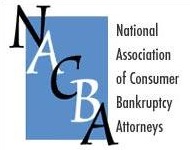
In a perfectly-executed world, clients who do business via an entity like a corporation or LLC would arrive with their business life neatly separated from their personal lives.
However, that’s not the world I practice in. It’s probably not yours, either.
Instead, I have to sleuth out the facts, and compare them to the individual’s version.
I see prospective debtors where the business lease shows the individual as the lessee; the vendors send invoices in the name of the former dba; and payroll taxes are being filed under the TIN of the former proprietorship.
And of course it’s critical to know precisely who is liable for each of those obligations in cases where you hope to craft a plan that doesn’t require both business person and her entity to file Chapter 7
So here’s a list of indicators of the functional separateness of individual and entity. As bankruptcy counsel, you need to know if each document exists, and if it does, what it provides.
Organizational documents
- articles of incorporation or organization
- bylaws or operating agreement
- current statement of officers, directors, and agent for service of process
- stock register showing issued shares
- bill of sale or other document showing transfer of prior business to the entity.
Governmental identity
- tax ID number
- business license
- fictitious business statement if necessary
- license to conduct profession or trade
- filed tax returns
Contractual dealings
- lease
- loan documents, including financing statements
- vendor accounts
- Business phone contracts
- internet domain registrations
- franchise agreements
- insurance policies
- vehicle titles
Owner/entity interactions
- compensation arrangements for owners
- loans to or from owners
- payment of personal expenses from entity funds
- outstanding but unpaid salary or expense reimbursement for management
When identities are scrambled
Your job as insolvency counsel becomes more challenging when you uncover inconsistencies between who owns or owes a particular debt.
If both entity and individual are headed to Chapter 7, it matters less. But if the separateness is well enough established, perhaps one or the other can file bankruptcy and leave the other securely outside of bankruptcy court.
Run down the check list and see where your entity stands now, before it’s critical.
More on business bankruptcy
When a corporate 7 serves a purpose
Sole proprietorships in Chapter 7







